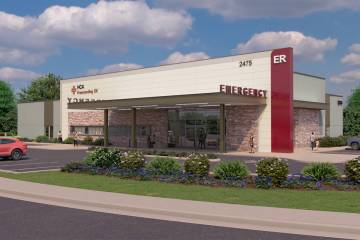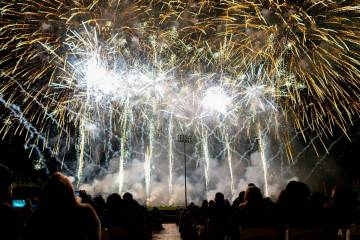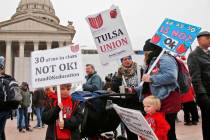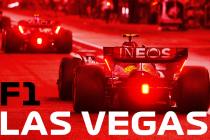Brown shooting small part of seemingly endless American tragedy
The ugly images of protest and police action burned from the television screen Sunday night. It was a mass of smoke and chaos, of signs waved and rocks thrown from one side, tear gas canisters and orders to disperse coming from the other.
The scene might have been broadcast from any number of troubled spots around the world. But it wasn’t coming from someone else’s country. It was from ours.
As Americans, we like to think the violence and seething anger boiling up from Ferguson, Mo., following the police shooting death of Michael Brown, an unarmed African-American man, happens in other places. Not in 2014 here in the land of freedom and equality, but in some Third World backwater or Middle East land riddled with religious extremists and thousand-year blood feuds.
Whether in the end Brown is remembered a martyr or a mugger is eclipsed by the symbolism of his death and its racial reverberations. He’s a bit player in a seemingly endless and awful tragedy involving the police and black American males.
Although broadcasts of the Sunday night protest featured scenes of simmering potential violence, we were informed the constitutionally protected gatherings done in daylight were far more constructive: heartfelt memorials, uplifting speeches, reminders of the importance of nonviolence, testimonials to our collective values. It’s just a guess, but they probably received lower ratings.
Missouri Gov. Jay Nixon on Saturday imposed a midnight-to-5 a.m. curfew with one hand and declared a state of emergency with the other. It’s not easy balancing the rights of free speech with the need for safety.
“We will not allow a handful of looters to endanger the rest of this community,” he told reporters. “If we are going to achieve justice, we must first have and maintain the peace.”
By Sunday night his wise words were obscured by the shouts of protest and the pepper fog of tear gas.
Before I turned the channel to something less troubling, I was reminded of Stanley Gibson. And Trevon Cole. And Orlando Barlow. Gibson was an Iraq War veteran killed by Las Vegas police in 2011. Cole was a suspected marijuana dealer killed in 2010 in an ill-conceived raid. Barlow, suspected of domestic violence, was killed by police in 2003. The black men were unarmed.
Although there were no mass protests over the incidents, a November 2011 Review-Journal series on officer-involved shootings helped lead to numerous stated changes in Metro’s use-of-force policies. The U.S. Department of Justice’s Office of Community Oriented Policing Services conducted an inquiry that resulted in a report that offered little news but some hope titled, “Collaborative Reform Process: Officer-Involved Shootings in the Las Vegas Metropolitan Police Department.” One of the report’s admirable goals: “Transform LVMPD’s organization and culture as it relates to deadly force.”
In addition to enhancing officer safety, the report sought to improve the department’s policy and procedures, training and tactics, investigation, documentation and review of officer-involved shooting incidents. It didn’t appear to study whether a history of racial tensions and perceptions had anything to do with whether police felt more threatened in the admittedly tense situations that cops encounter every day.
That wasn’t the purpose of the Metro investigation. Nor is it an indictment of the process. The fact the department, after prodding from the press, appears to have embraced a number of changes in policy and procedure is admirable.
It wouldn’t be surprising if we soon learn such “collaborative reform” is embraced by police departments throughout Missouri — after the tear gas smoke clears, of course.
There’s something else from the Metro report that cops in Missouri might find useful. After many interviews, the feds determined that Metro needed to “establish an annual requirement for officers at the rank of sergeant and below to undergo a minimum number of hours of de-escalation training and formalize assessments of de-escalation tactics.”
De-escalation can be a useful police tactic, too.
Ask Sheriff Doug Gillespie about that. His decision to de-escalate police presence during the showdown with armed protesters outside Cliven Bundy’s Bunkerville ranch probably saved lives. What do you suppose would have been the outcome if the Ferguson protesters had been armed, as the Bunkerville militiamen were, with semiautomatic weapons?
To deny race has sometimes played a role in use-of-force decisions by police is counter to the ugly facts. We should face the facts and work to improve the system that exists.
A check of Google tells us it’s about 1,600 miles from Las Vegas to Ferguson, but history reminds us the distance is much, much closer.
John L. Smith’s column appears Sunday, Tuesday, Wednesday, Thursday and Friday. E-mail him at jsmith@reviewjournal.com or call (702) 383-0295.

















